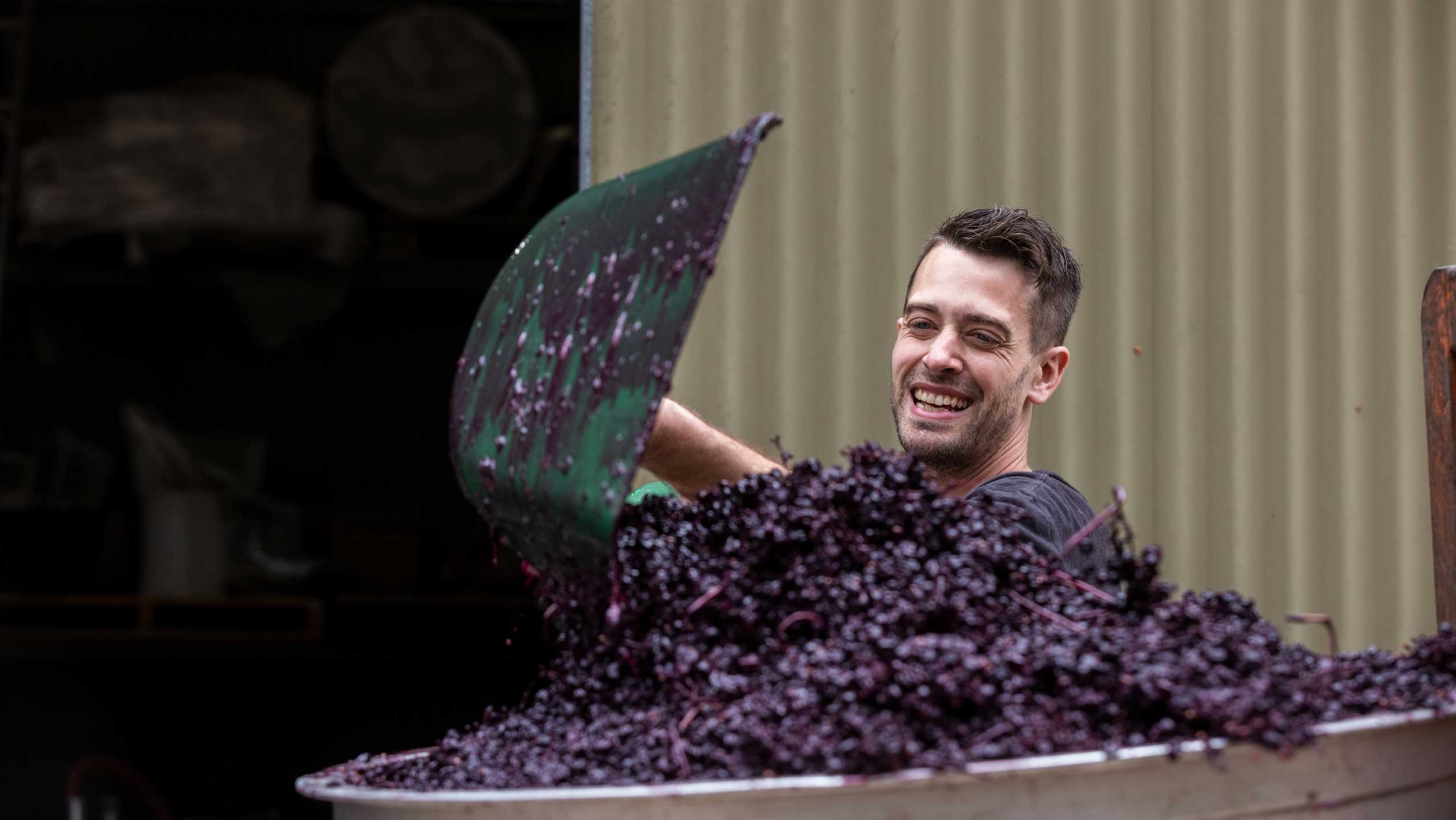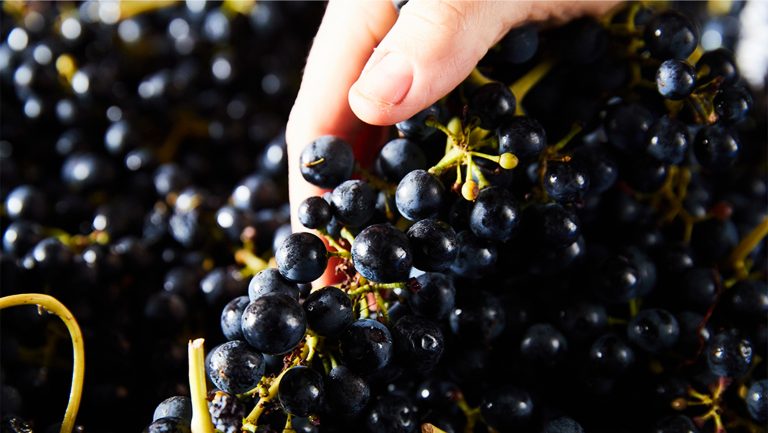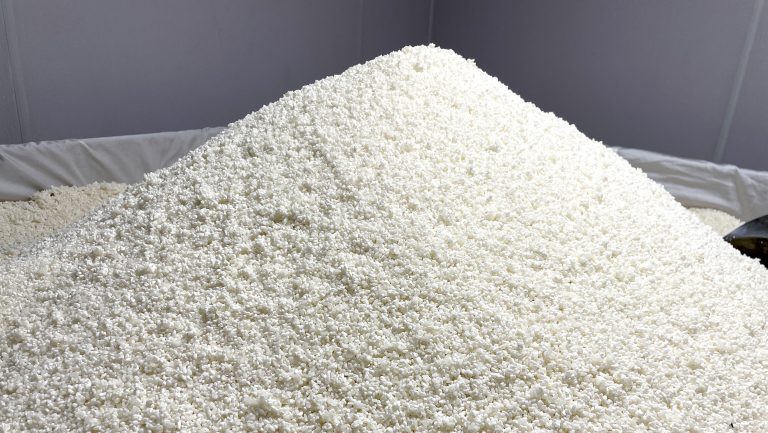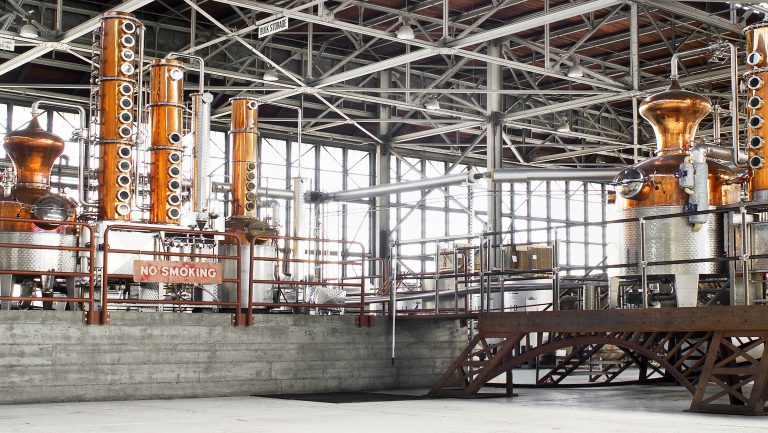As wine drinkers increasingly look for lighter and fresher red wines, more winemakers around the globe are turning to carbonic maceration, a technique long associated with Beaujolais’s juicy, fruit-forward style.
The technique relies on enzymes within the grapes to break down sugars and acids into alcohol inside the cells of the fruit—no yeast required. The process can result in lighter wines with a heightened fruit character, and brighten up wines that may otherwise might be too powerful and concentrated.
Research is finding other applications as well—from lowering a wine’s alcohol to softening some hybrid varieties’ foxy aromas—so it’s no surprise carbonic maceration has become part of the toolbox for winemakers all over the world, even if they can’t always agree on the exact terminology.

Don’t miss the latest drinks industry news and insights. Sign up for our award-winning newsletters and get insider intel, resources, and trends delivered to your inbox every week.
The Fundamentals of Carbonic and Semi-Carbonic Maceration
“A lot of growers in Beaujolais say they do ‘carbo,’ as a shorthand,” says Adrien Duboeuf-Lacombe, the grandson of Georges Duboeuf and deputy general manager for the eponymous winery. “But this is an abuse of the language.” In fact, winemakers around the world are equally free with their language, but what often passes for carbonic maceration can be broken down into three distinct winemaking techniques.
Full carbonic maceration calls for hand-picked fruit, as whole, intact berries are required. The whole bunches are piled into a vat, which is then sealed and filled with carbon dioxide, creating an anaerobic environment. The unbroken berries absorb the gas, which triggers enzymatic activity within the individual cells of the fruit. Two forms of dehydrogenase enzymes begin transforming both sugar and malic acid into alcohol, a process known as intracellular fermentation. Polyphenols migrate from the skin into the pulp, which darkens. The skin weakens as well, and splits once 2% ABV is reached. This process can last from a few days to over two weeks, but as more berries split open, traditional fermentation eventually takes over.
The big difference between full and semi-carbonic fermentation is the source of the CO2. According to Duboeuf-Lacombe, in semi-carbonic fermentation, winemakers do not artificially add the gas to the tank. Instead, as the whole grape bunches are piled into the vat, the mass of grapes presses down upon itself. The skin of some of the berries breaks from the pressure, juice flows out, and, thanks to yeast on the skins of the grapes, begins to ferment in the traditional, yeast-driven manner. Fermentation creates alcohol, heat, and carbon dioxide; the closed-top fermentation vat traps the CO2 gas inside. Unbroken berries then react to this CO2, just as they would when the gas was pumped in.
“Semi-carbonic fermentation is a natural process,” says Duboeuf-Lacombe, contrasting full carbonic maceration’s artificial environment. In fact, one of the early advocates of semi-carbonic fermentation was Jules Chauvet, often called the godfather of natural wine. “Within France, [full] carbonic maceration is mainly used in the southwest with very strong varieties like Tannat and Malbec,” says Duboeuf-Lacombe. “There is no sense using it with Gamay because it’s already a light, juicy, low-tannin, low-acid wine.”

Adding to the confusion of nomenclature, Peter Stolpman, the owner of Stolpman Vineyards in Santa Barbara, says producers using whole-bunch fermentation often refer to the technique as “partial carbonic,” but it is actually another distinct method. In this case, some of the grapes are likely to go through intracellular fermentation, but the vat is not covered and no effort is made to contain the carbon dioxide in the tank; punchdowns and pumpovers continue, dispersing the CO2.
What Is the Impact of Carbonic Maceration on Finished Wines?
Both full and semi-carbonic maceration create distinct aromas, albeit to varying degrees, most notably from compounds deriving from accumulations of shikimic acid. It breaks down into benzaldehyde, vinylbenzene, and ethyl cinnamate; these volatile aroma compounds manifest as aromas of cherry and almond; plastic; and cinnamon and strawberry, respectively. While strongly associated with carbonic maceration due to their presence in nouveau-style wines, the compounds continue to break down, so the aromas rarely appear in wines that are aged for more than three or four months after fermentation.
Carbonic maceration also affects the structure of finished wine. In general, these wines will have softer acidity and tannins, and a lighter color. During intracellular fermentation, a portion of malic acid is transformed into alcohol, lowering this type of harsh acidity. The grape skins, which contain phenolics like tannins and anthocyanins, spend less time in contact with substantial levels of alcohol—a solvent—so less color and tannin is extracted.
Pressing the must after semi-carbonic maceration and fermentation yields different results than conventionally destemmed and crushed grapes. “When you’re pressing a ‘normal’ wine, everything is fairly uniform, and just gets more tannic as you go along,” says Sebastian Hardy, who makes wine in Australia and the Finger Lakes under the brand Living Roots. “But in these semi-carbonic wines, you get tannic and dry wine from the free run juice. Then the juice in the berry is sweeter, and very bright and juicy and not tannic. The end of the pressing gets back into the skins and it gets tannic again.”
Hardy keeps the three portions separate because they are so different, only blending them later when assembling the final wine. Hardy uses this technique for several Living Roots wines, including portions of their Adelaide Hills and McLaren Vale Shiraz and most notably the Tannat in their Cabernet Sauvignon-Tannat blend.
Making Lower-Alcohol Wines and Other Applications of Carbonic Maceration
Research published in Food Chemistry in November 2023 suggests that this difference in cuts could offer a low-cost tool for wineries looking to make lower-alcohol wines. In three years of trials using Tempranillo and Graciano, portions of the pressing were as much as 3.7 degrees lower in alcohol than wine from the same grapes made without carbonic maceration. According to the report, the lower alcohol portion was “less affected in terms of color and aromatic losses than when other techniques are used to lower alcohol content,” and can be produced much more affordably.
The one drawback revealed in the study was that this lower-alcohol, free-run portion amounted to 25 to 35 percent of the total volume; the remaining, pressed wine showed more conventional levels of alcohol. Producers who opt to make a lower-alcohol wine this way would still have to use much of the production for a more conventionally alcoholic wine. This application, while promising, is yet to be adopted by many winemakers.

While any number of red grapes could potentially receive carbonic treatment of one sort or another, an academic review published in October 2022 suggests that red hybrid grapes are particularly strong candidates. Various studies found that carbonic maceration reduced some of the less commercially desirable, foxy aromas found in some hybrids and non-vinifera varieties, such as Concord.
Many hybrids also possess higher malic acid levels—so high in some cases that conventional malolactic fermentation cannot commence. Carbonic maceration was shown to be an effective and low-cost deacidification technique for these varieties. Hardy works with Marquette and a few other hybrid varieties in the Finger Lakes. “Carbonic is a good technique for hybrids,” he says, “but some of the early hybrids and native varieties can have so much fruitiness,” that carbonic maceration can be too much of a good thing.
Some winemakers have also turned to semi-carbonic maceration to increase the brightness and freshness of overly structured wines. When Stolpman Vineyards began lowering their use of irrigation in the vineyards, they found they got smaller, increasingly concentrated grapes. “We were getting these tannic, really big, rich, thick, dense wines,” says Stolpman. They began punching down less and less. “And with that evolution, well, eventually we said ‘what if we don’t punch down at all?’” Stolpman decided to employ semi-carbonic maceration, and the resulting Sangiovese called Love You Bunches took off. The first vintage was 2013; there are now several wines in the Love You Bunches lineup, as well as a semi-carbonic Syrah called Crunchy Roasty.
For Stolpman, the myth that semi-carbonic maceration only yields simple wines doesn’t hold up. “It’s a very naked expression, but I think the beauty of Santa Barbara carbonic wines is that we can get great complexity and a dynamic profile, even with that lighter touch.”

Dispatch
Sign up for our award-winning newsletter
Don’t miss the latest drinks industry news and insights—delivered to your inbox every week.
Jim Clarke writes about wine, beer, and spirits for trade and consumer publications, including Beverage Media, Fortune, and World of Fine Wine. He is a sommelier and the U.S. marketing manager for Wines of South Africa.






